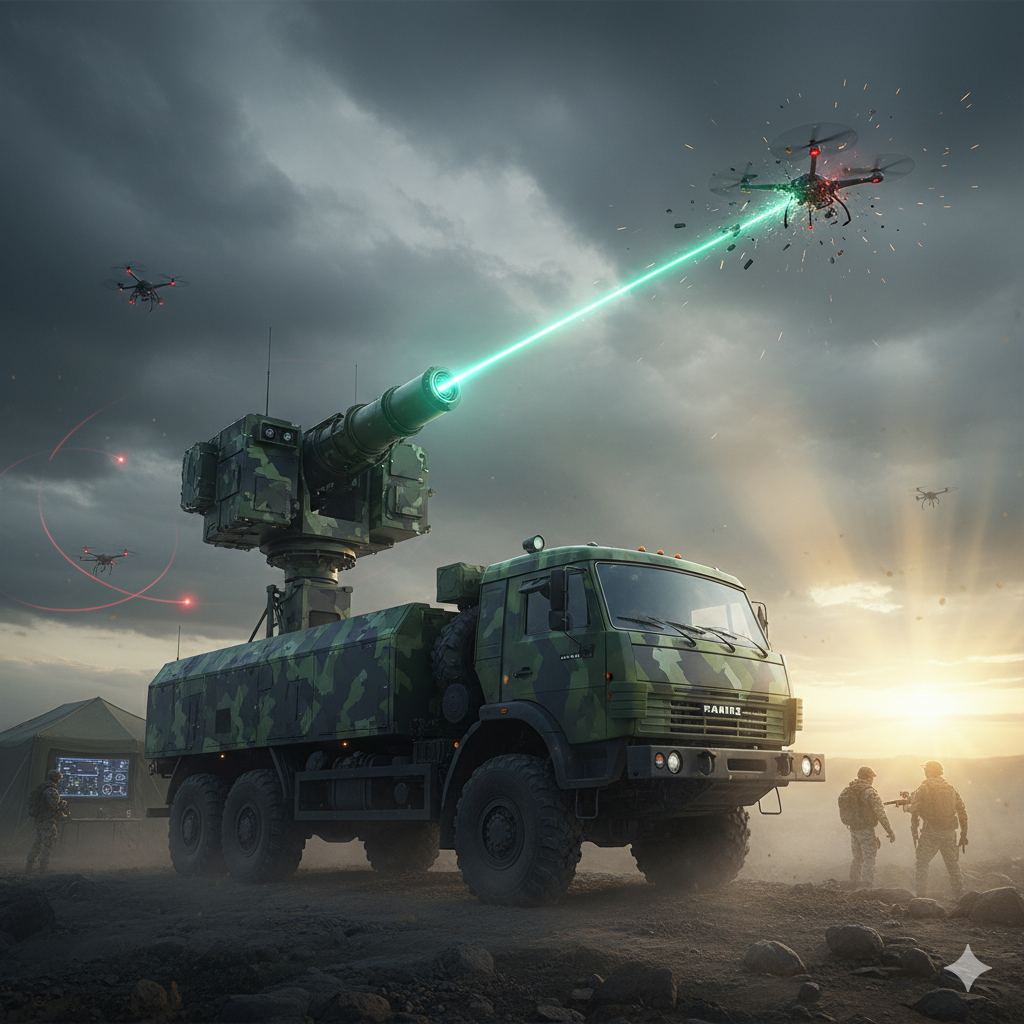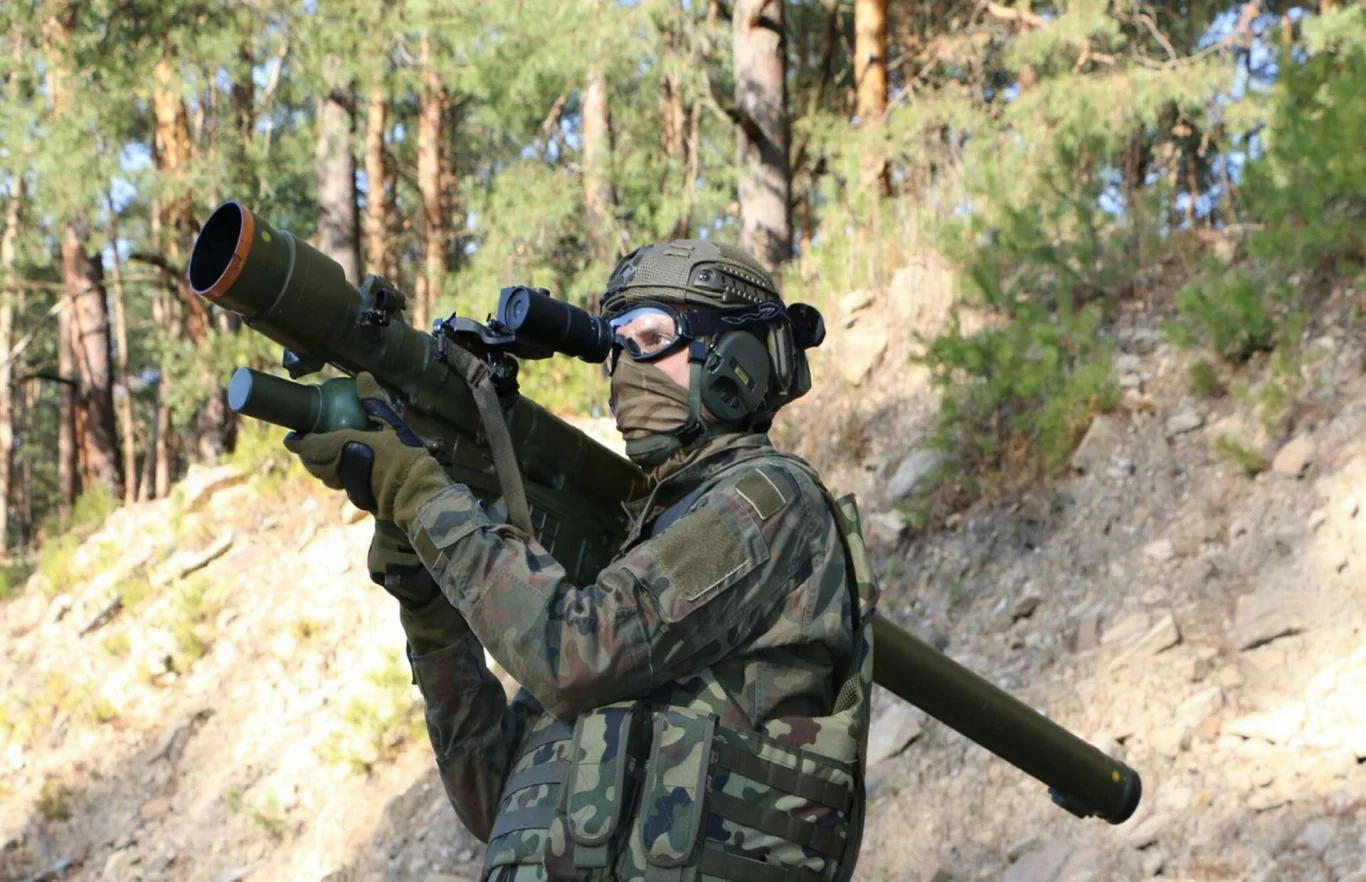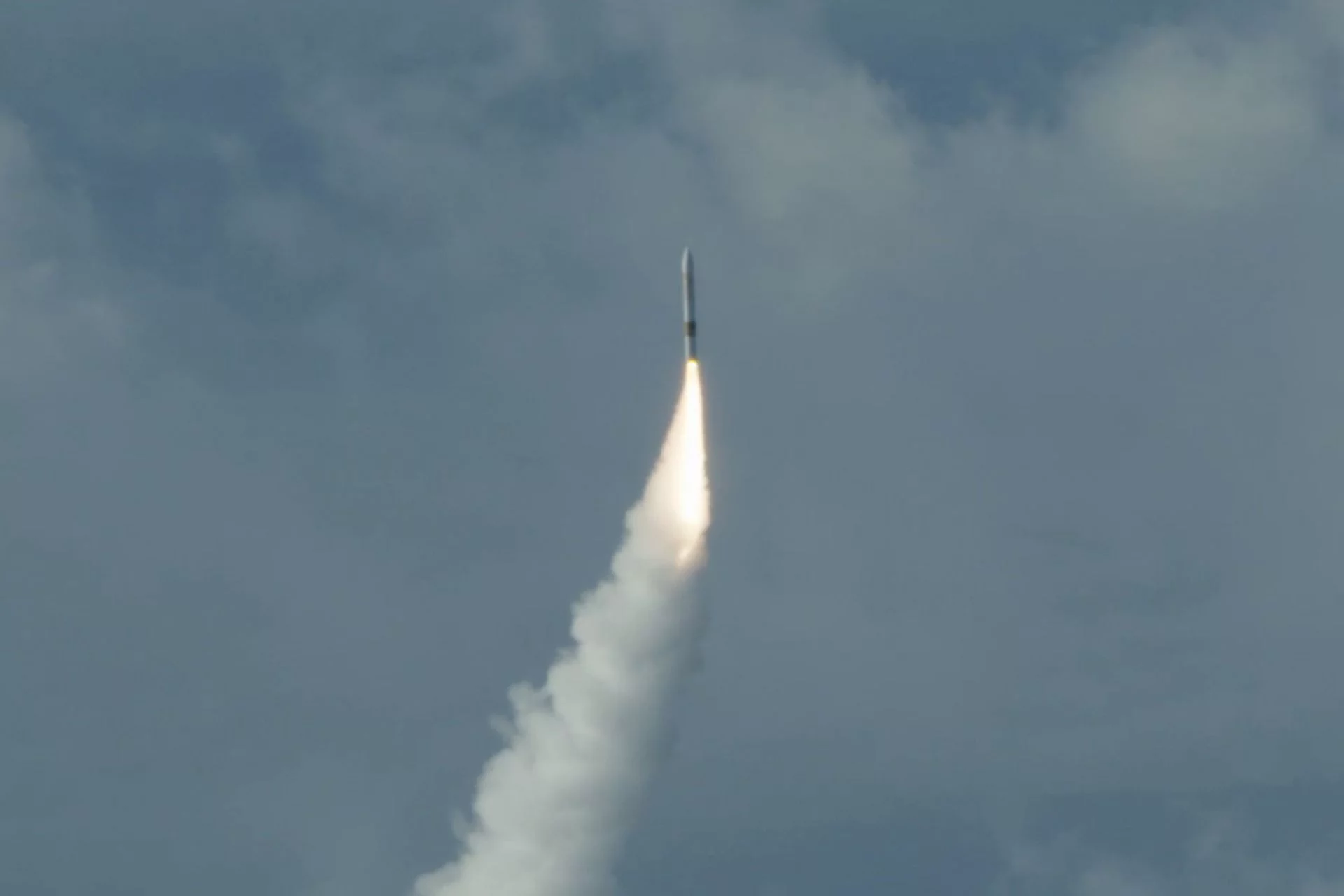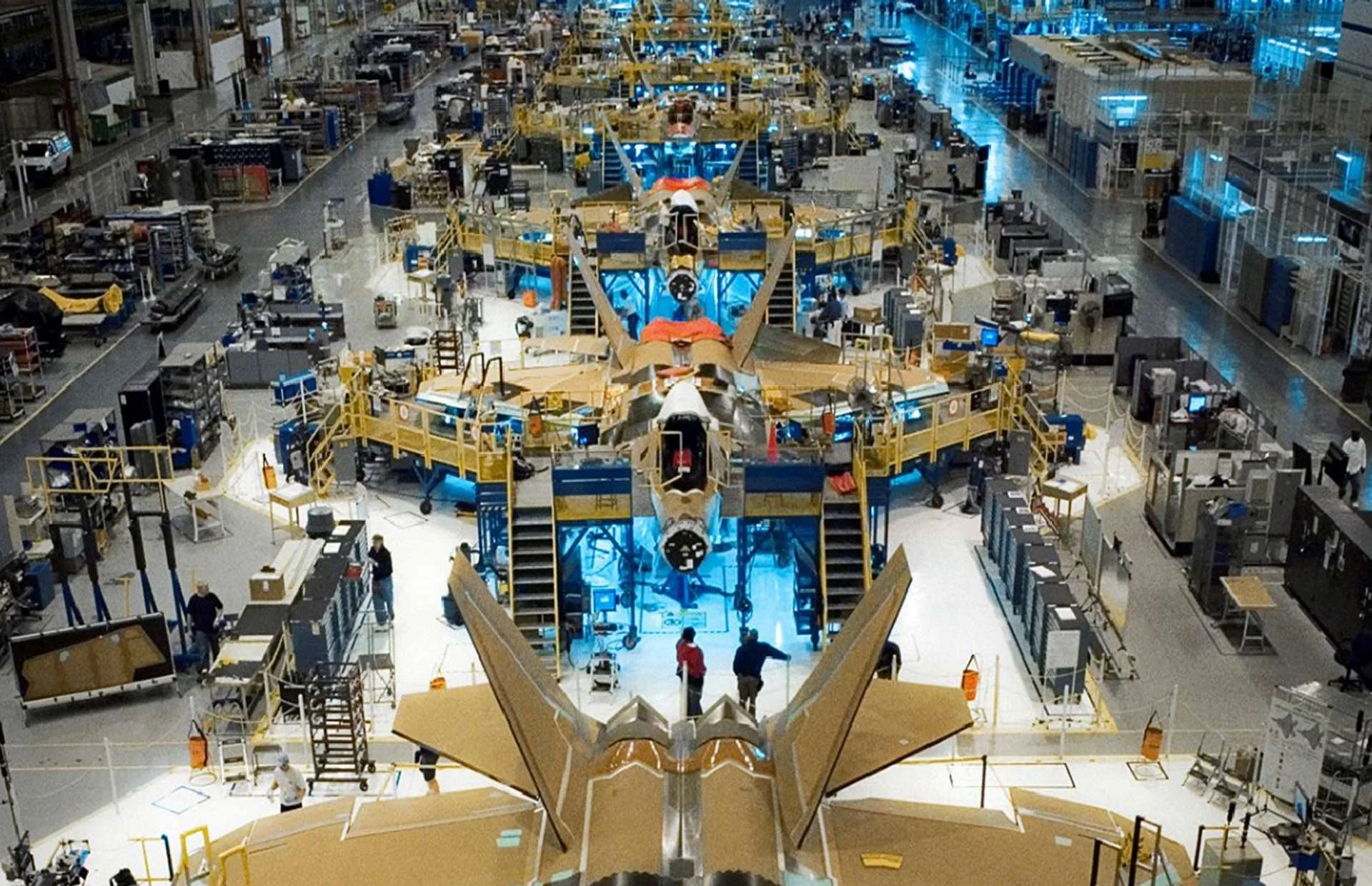The modern battlefield is increasingly dominated by the pervasive threat of unmanned aerial vehicles (UAVs), or drones. From reconnaissance to precision strikes, drones have redefined warfare, presenting a significant challenge to traditional air defense systems. In response, nations are rapidly developing innovative counter-drone solutions. Russia has now officially entered this burgeoning field with the debut of a sophisticated, truck-mounted anti-drone laser system, designed to deliver rapid, multi-target defense. As reported by Army Recognition, this development marks a pivotal moment, showcasing Russia’s commitment to cutting-edge directed energy weapons and its adaptive response to contemporary battlefield threats.
For years, the conventional methods of drone interception – ranging from anti-aircraft guns to surface-to-air missiles – have been effective but often come with high costs per engagement, limited ammunition, or collateral damage risks. The emergence of laser technology offers a compelling alternative: a high-speed, precision, and potentially low-cost-per-shot solution that can address the swarm tactics increasingly employed by drone operators. Russia’s new system isn’t just a prototype; it’s a mobile, operational asset poised to change the dynamics of anti-drone defense.
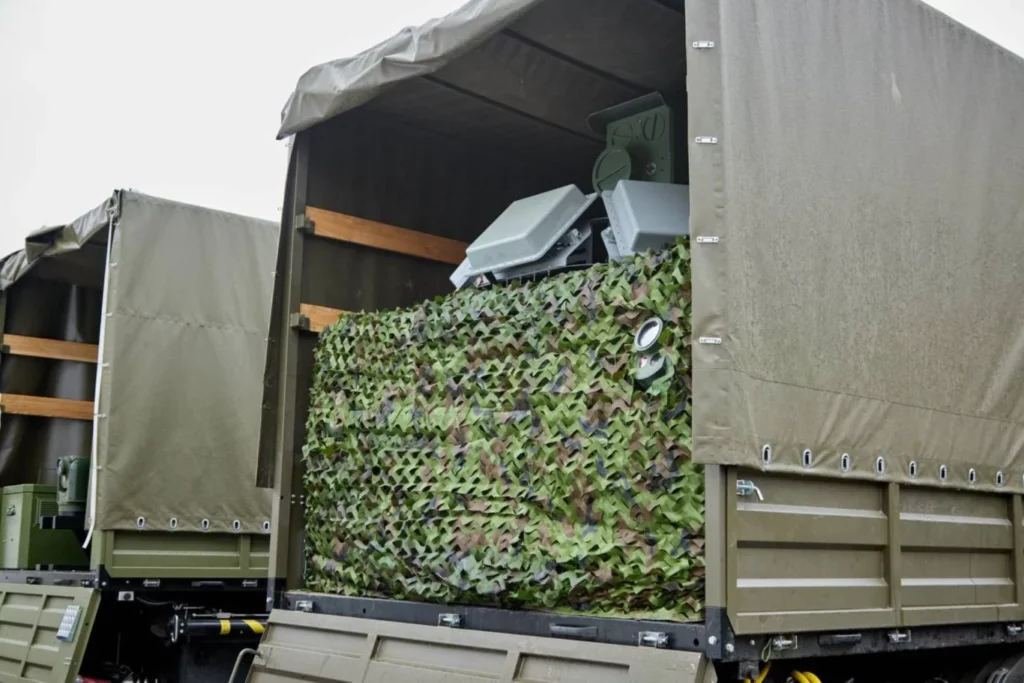
The Rise of Directed Energy: Why Lasers for Anti-Drone?
The shift towards directed energy weapons, particularly lasers, for counter-UAS (C-UAS) operations is driven by several compelling advantages:
- Speed of Light Engagement: Lasers travel at the speed of light, making them virtually instantaneous in their effect. This is crucial against fast-moving or swarming drones, where traditional projectile weapons might struggle to intercept.
- Cost-Effectiveness per Shot: Unlike missiles, which are expensive, a laser system’s “ammunition” is essentially electricity. While the initial investment in the system is high, the cost per “shot” is dramatically lower, making it ideal for engaging numerous, inexpensive drones.
- Scalable Effect: A laser can be used for “soft kills” (disabling sensors or communications) or “hard kills” (physically destroying the drone’s structure), offering a scalable response depending on the threat level.
- Silent and Invisible: Laser engagements are largely silent and invisible, making them stealthier than traditional kinetic weapons and less likely to reveal the position of the defender.
- Deep Magazine: As long as there’s power, a laser can continue firing, providing a virtually unlimited “magazine” against sustained drone attacks.
Russia’s Mobile Solution: Design and Deployment
The choice of a truck-mounted platform for Russia’s new anti-drone laser system is highly significant. Mobility is paramount on the modern battlefield, allowing assets to quickly reposition, protect different areas, and avoid becoming static targets themselves. Mounting the system on a truck chassis suggests a focus on:
- Tactical Flexibility: The system can be deployed rapidly to protect high-value assets, forward operating bases, or critical infrastructure from drone threats.
- Integrated Defense: It can operate as a standalone unit or as part of a layered air defense network, complementing existing radar and kinetic systems.
- Operational Reach: A mobile platform extends the geographic coverage of laser-based counter-drone capabilities, moving with ground forces as needed.
While precise technical details are often kept under wraps, such systems typically involve a high-power laser emitter, sophisticated optical tracking and targeting systems, and a robust power source. The “multi-target defense” aspect implies advanced fire control software capable of rapidly acquiring, tracking, and engaging multiple drones, either sequentially or potentially even simultaneously with beam-splitting technology, though the latter is more complex. The system would likely integrate with existing battlefield surveillance networks to receive early warnings of incoming threats.
Implications for Modern Warfare and Geopolitics
The operational debut of Russia’s truck-mounted anti-drone laser carries significant implications:
- Battlefield Protection: It offers enhanced protection for Russian forces against the pervasive threat of enemy reconnaissance and attack drones, potentially reducing casualties and preserving critical equipment.
- Technological Advancement: It signals Russia’s progress in directed energy weapons, an area of military technology that many major powers are heavily investing in. This demonstrates a commitment to innovation and maintaining a technological edge.
- Deterrence: The existence of such a system can act as a deterrent to adversaries relying heavily on drone warfare, forcing them to re-evaluate their tactics and invest in more resilient drone technologies.
- Evolution of Air Defense: This marks a further step in the evolution of air defense, moving beyond purely kinetic solutions to incorporate directed energy, which promises to be a cost-effective and efficient method against certain threat profiles.
- Global Impact: As more nations field operational laser weapons, the landscape of air superiority will inevitably shift, prompting new defensive and offensive strategies globally.
Russia’s new truck-mounted anti-drone laser system is more than just another weapon; it’s a tangible manifestation of how modern armies are adapting to a new era of warfare. As drones continue to proliferate and evolve, the race to develop effective countermeasures intensifies, and Russia has just demonstrated a potent new blade in its defensive arsenal.

